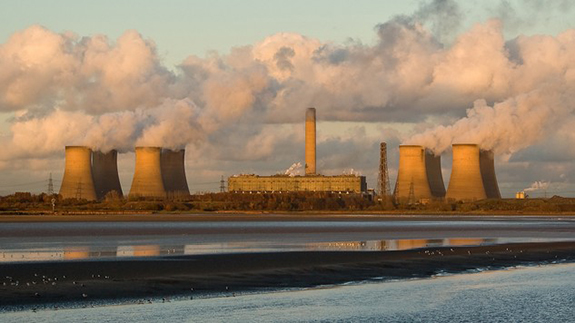Many air pollutant emissions are below internationally agreed limits, except nitrogen oxides, according to a European Environment Agency report released today. Emissions of three air pollutants, including fine particulate matter, are only slightly above targets to be met in 2020.
“Europe can go beyond the emissions reductions that have already been achieved. We also need to think beyond purely technical measures, working towards a structural shift in our economy and promoting international cooperation.”
Hans Bruyninckx, EEA Executive Director
Nitrogen oxides (NOx) are mainly caused by traffic, although this pollutant is also emitted by industrial facilities and power plants. This pollutant and many others are still harming health and the environment across Europe. For three pollutants – ammonia (NH3), NMVOC and fine particles (PM2.5) – emission levels in 2011 are already very close to the 2020 reduction commitments under international legislation, according to the EEA technical report, indicating that the EU could aim for more ambitious targets.
Hans Bruyninckx, EEA Executive Director, said: “Air pollution still has an impact on Europeans and our environment. Europe can go beyond the emissions reductions that have already been achieved. We also need to think beyond purely technical measures, working towards a structural shift in our economy and promoting international cooperation.”
The UNECE Convention on Long-range Transboundary Air Pollution (LRTAP) was agreed in order to limit air pollutants causing acid rain and eutrophication, often far away from the source of the pollution as air currents carry the pollutants long distances and across borders. Many of the pollutants addressed also harm human health, causing a range of problems from respiratory illnesses to cardiovascular disease, leading to premature death in some cases.
The Gothenburg Protocol to the UNECE LRTAP Convention contains emission reduction commitments that have to be met from 2010 and onwards, for the pollutants nitrogen oxides (NOx), non-methane volatile organic compounds (NMVOCs), sulphur oxides (SOx) and ammonia (NH3). In addition to the emission reduction commitments for individual countries, the protocol also specifies reduction commitments for the EU.
NOx is the only pollutant for which the 2011 emissions exceeded the respective EU emission reduction commitment. For the remaining pollutants, the emissions in 2011 were below the respective air pollutant reduction commitments. The Protocol was recently updated to include five targets for the year 2020, including a target for fine particulate matter (PM2.5).
Past air pollutant emission reductions
Since 1990 the EU’s most successful reduction of air emissions has been cutting sulphur dioxide (SO2) – in 2011 emissions were 82 % lower than in 1990. Many other air pollutant emissions have more than halved during this time, including the main heavy metals (lead, cadmium, mercury), and persistent organic pollutants such as dioxins and furans, hexachlorobenzene (HCB), hexachlorocyclohexane (HCH) and polychlorinated biphenyls (PCBs).
Between 2010 and 2011, emissions of most main air pollutants continued to fall, including NOx, sulphur dioxide (SO2), NMVOCs and carbon monoxide. For all pollutants except NOx, the European Union’s emissions were below the respective reduction commitments in 2011.
There are many reasons for emission reductions, including power stations switching from solid and liquid fuels to fuels such as natural gas, new legislation limiting vehicle exhaust emissions, flue-gas scrubbing technology in industry, reduced sulphur content in some liquid fuels, lower point-source emissions from industrial facilities, and the closure of older industrial facilities as a consequence of economic restructuring.
Background information
The report includes emissions over the period 1990-2011 for the air pollutants sulphur oxides (SOx), nitrogen oxides (NOx), non-methane volatile organic compounds (NMVOCs), ammonia (NH3), carbon monoxide (CO), particulate matter (PM), heavy metals (HMs) and persistent organic pollutants (POPs).
The inventory compiled by the EEA on the basis of data submitted by EU Member States is largely complete for 5 (NOx, NMVOCs, SO2, NH3, CO) out of 26 air pollutants. Member State submissions contain various data gaps for particular pollutants or years in the time series. A procedure to fill such gaps was applied, but was impossible in some instances in which case the EU emission totals for these pollutants are underestimated.
Published : 26 Jun 2013
– Courtesy of the EEA






